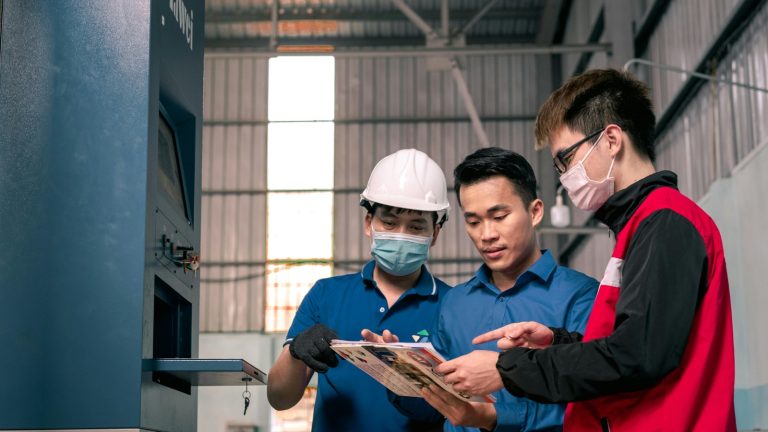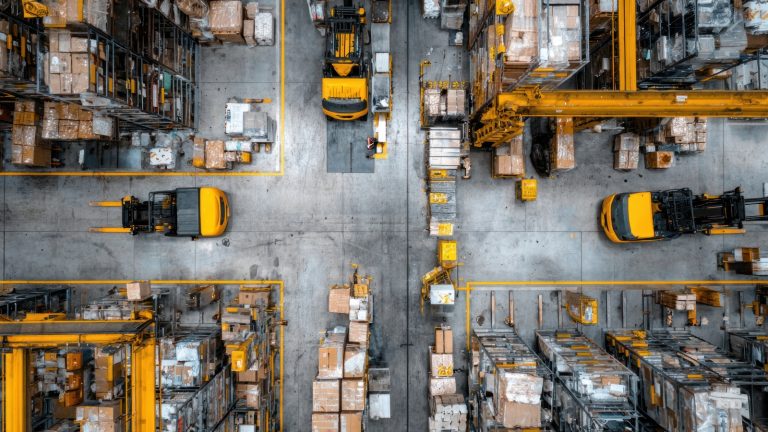Warehousing lies in the heart of manufacturing, and it acts as an integrative interface linking production and shipping. The goods that are fabricated carefully must be delivered to the right customers in top-quality condition, and this is where the function of the warehouse comes into play as a significant layer of the entire operational framework. However, there are many layers or processes in the warehousing mechanism, and each stage provides the solid ground for the next stage to be built properly.
In this article, we cover the eight types of warehousing processes in the manufacturing world.
What are Warehousing Processes?

- Warehousing processes are a web of primary activities that materialise inside a warehouse, and they are important when handling the flow of goods.
- A warehouse process is basically involved with the steps such as receiving, storing, picking, packing, and shipping products.
- Since it is a vital factor to keep the production safe, organised and easily found, every manufacturing company has to go through all of these stages when creating a product. Not only does the latter support the manufacturers to save time and reduce mistakes, but it also makes sure customers get their orders on time.
- Choosing the right warehousing process pours the cement to build up a solid and agile supply chain in this fast-moving manufacturing industry.
8 Types of Warehousing Processes

Receiving
The warehouse operations begin with receiving as the first step, and in that step, the warehouse functions throughout the process of accepting goods delivered from suppliers or manufacturers.
This is where the warehouse workers need to check the received goods to make sure they have received the right products and in the right quantities. Plus, they need to make sure that everything they received is in expected conditions.
The warehouse recording the items they received from the suppliers for tracking purposes happens in the same phase. The whole point of this initial stage is to ensure that the goods are free of errors and the company face zero delays in the first stage.
It is a must to report any issues like damages and missing items immediately, as accurate inventory data is important for the next stages.
Putaway
Then comes the second phase, which is known as ‘putaway’, and this is where the staff tend to move the received goods from the receiving area to their correct storage locations.
This step plays a key role in keeping the warehouse organised and efficient. Based on the product size, usage frequency and the space requirements, either the workers or automated systems decide where each product should go.
Proper putaway significantly minimises retrieval latency within warehouse operations and product damage, and increases operational velocity in subsequent picking tasks. It also upholds organisational standards and operational stability. A well-crafted putaway system keeps the warehouse running smoothly, saves time and maximises storage space.
Storage
There must be a space to keep the goods in safe conditions until they are needed. This is where the storage comes in, as it maintains the goods in a place where they are easily accessible.
Warehouses separate the products based on their size, type, and demand and tend to place them on shelves, racks, or bins, etc.
In this stage, the two purposes must be taken into consideration; the warehouse needs to be able to utilise the space efficiently, and the goods must be easy to find.
If there are sensitive goods, the warehouses have to keep some storage conditions, such as temperature and humidity, under control.
Inventory Management
Inventory management speaks about tracking and controlling the items that the company has stored in the warehouse. This is why the warehouses are following well-thought-out recording systems.
The whole point of doing so is to guarantee that the right products are available at the right time and in the right quantities. Inventory management is a complex chain of processes as it involves counting stock, updating records, and monitoring product movement.
Both understocks and overstocks are problematic for the warehouse. The modern manufacturers and warehouses keep track of each item employing some robust warehouse management tools to ensure less waste.
Order Picking
Order picking is a Methodical selection framework for efficient goods identification for the delivery of products aligned with order obligations. Employees get a choosing list that includes the necessary products and amounts. After that, they go to retrieve them from the warehouse.
Since this is one of the most lengthy processes, performance is a crucial factor.
Some warehouses utilise robots or scanners to expedite the process. Accurate order picking minimises returns and increases customer satisfaction by ensuring that consumers receive the right goods promptly.
Packing
When it comes to packing, it involves executing preparatory steps to make the picked products shipment-ready for shipping. Upon verifying that all items comply with required specifications, workers methodically bundle the things in boxes or other containers.
In addition to providing shipping information, packaging materials like bubble wrapping, labels and tape are applied to maintain cargo integrity.
Alongside preventing damage during transit, proper packaging is what matters in keeping shipments organised.
Additionally, it lays the base to guarantee that when goods are delivered to clients, they will appear flawless.
Shipping
In this process, the warehouses act to fulfil the requirement of sending packed orders to the end point. This can be customers or other destinations.
Shipping is one of the complex steps as it includes a broad spectrum of processes such as preparing records, labelling packages, and loading them onto delivery trucks.
The most important part is that the warehouse staff is supposed to make sure that each shipment matches the order details before it leaves the warehouse.
Plus, the trucks with the right goods leave the warehouse on time. It is indeed the most vital aspect of proper shipping to ensure the safety of the product and delivery speed.
Returns Processing (Reverse Logistics)
Returns processing, popularly known as reverse logistics, is the mechanism of dealing with products that come back to the original point or the warehouse.
There can be many reasons that a customer returns their goods. It may be due to wrong delivery, damage or quality breaches and other issues. In this stage, the warehouse operators need to inspect the returned goods to decide whether they can be restocked or repaired, or, in worst-case scenarios, discarded.
This process helps recover value from returned items and keeps inventory records accurate. Good returns management improves customer trust and reduces waste.
Cerexio WMS for a Perfect Warehouse Processing

Understanding the complexities of a warehouse and challenges when managing all the warehouse processes, Cerexio has developed the best Warehouse Management System (WMS) to help manufacturers make their warehousing ecosystem perfect. From real-time monitoring, tracking goods, to inventory management, Cerexio WMS is the best solution you can have for your warehouse in this digital age.
Opting for Digital Tools for an Upgraded Warehousing Process Framework

It is indeed challenging for the warehouses to keep every layer of the process perfect from A to Z if there is no real-time visibility. This is when the digital tools enter the scenario to offer an upgrade to the latter with heightened traceability.
FAQ about Warehousing Processes
The principal warehouse processes start from the receiving process, and spread across a variety of stages such as storing, picking, packing, shipping goods, as well as inventory management with complete quality control.
There are four major types of warehouses, ranging from private warehouses, public warehouses, contract warehouses, to cooperative warehouses.
It is a responsibility of processing and moving products throughout the distribution centre. Also, it is a part of the said position to ensure products are in perfect condition for the clients.
